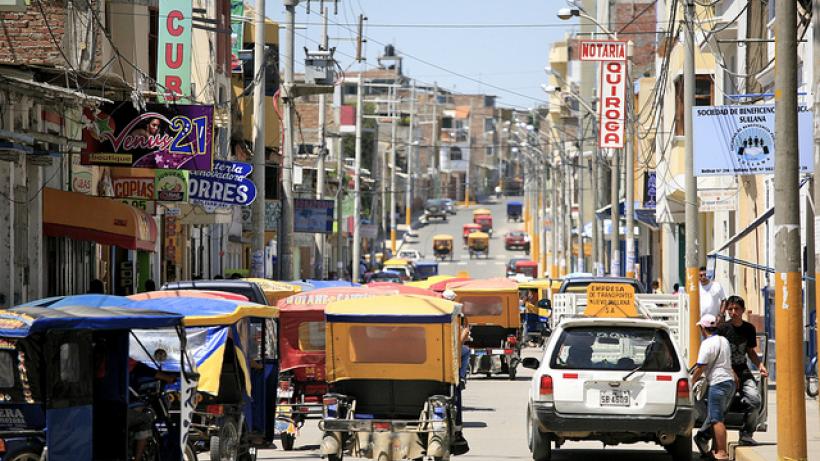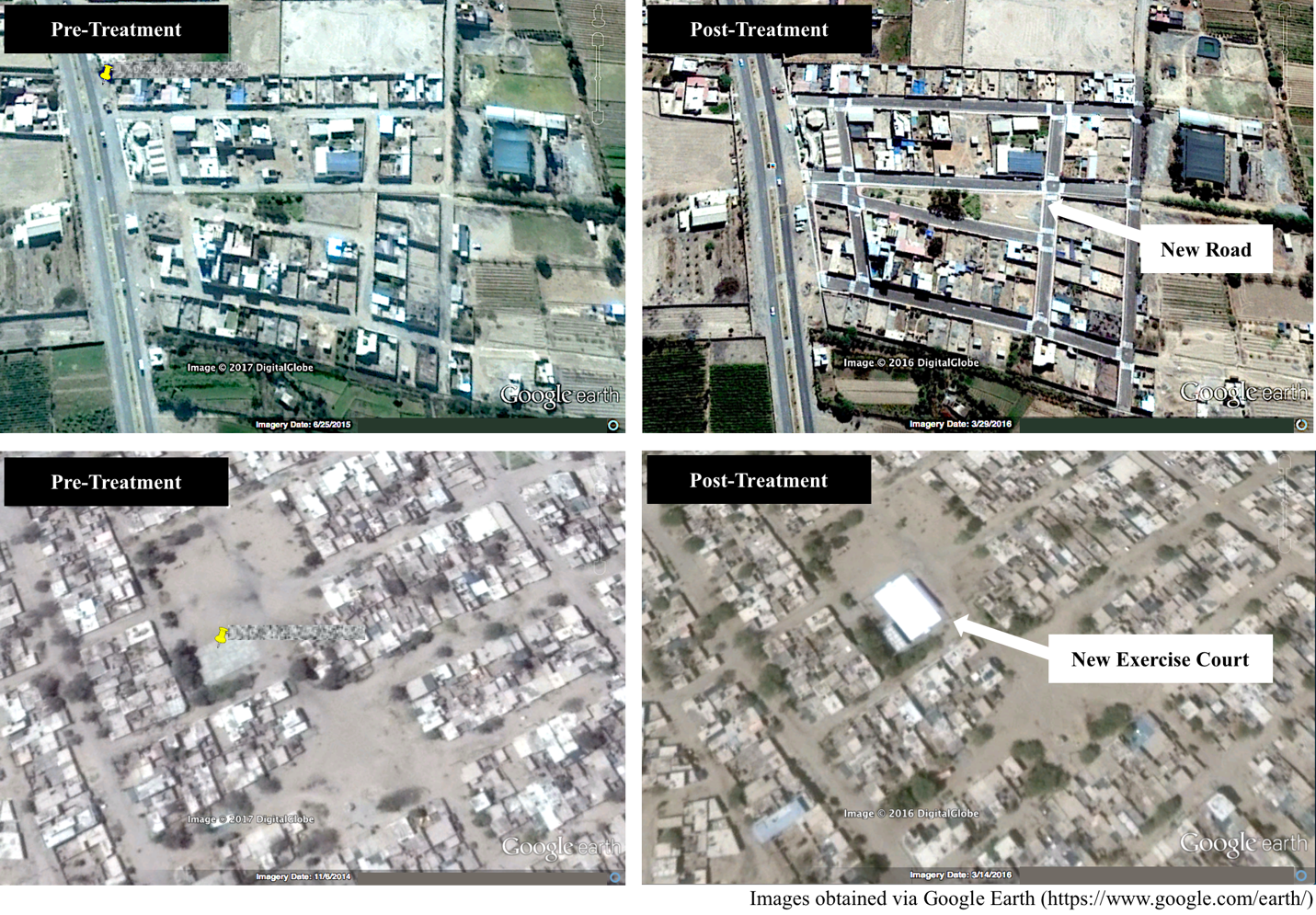
Guardians of accountability: A field experiment on corruption and inefficiency in Peru’s local public works
A field experiment tested the extent to which civil society oversight can curb corruption in public infrastructure, when supported by the relevant authority. Districts that received the monitoring intervention spent, on average, 75,000 US dollars less per project.
Corruption in Latin America
Lava Jato is Latin America’s largest corruption scandal to date. Brazilian prosecutors discovered that construction companies were colluding with employees of the state-owned oil company, Petrobras to win public works contracts (Fuentes, 2016). Those involved in the scheme stole billions of state dollars (Leahy, 2016; Sandy, 2016). Prosecutors further revealed that bribes paid by Odebrecht, the region’s largest construction group, extended to 11 other countries besides Brazil (DOJ, 2016). In Peru, 29 million dollars were paid to secure public works contracts worth nearly five times that amount (Hochstetler, 2017).
Lava Jato is a recent and striking reminder of the corruption that burdens Latin America. To make matters worse, the high levels of corruption contribute to some of the region’s other problems—from lack of political legitimacy (Seligson, 2002) to slow economic growth (Kaufmann and Wei, 1999). In sector after sector, corruption generates inefficiencies (Kaufmann, 1997). It incentivises delays in public procedures (Mauro, 1995), and requires resources to be spent on hiding evidence of quid-pro-quo transactions (Rose-Ackerman, 1978).
The study
Responding to these concerns, I executed a field experiment in Peru to test the extent to which civil society oversight can curb corruption in public infrastructure when its efforts are supported by the relevant authority. The study’s main result shows that districts that received anti-corruption monitoring spent 51.39% less in the execution of public works than comparable districts that were less scrutinised. In other words, corruption fighting in this instance saved the Peruvian treasury a few million US dollars. This finding challenges the assumption that anti-corruption oversight is an obstructive activity that makes a public administration work less efficiently.
Before and after: Images of public works that received the monitoring intervention

Corruption and inefficiency in public works
Corruption and inefficiency are related pathologies. A bureaucracy that is affected by one is likely also affected by the other. Indeed, there is empirical evidence that corruption and inefficiency are strongly correlated (Dal Bó and Rossi, 2007). There is also evidence that bureaucratic delays incentivise bribery (Mauro, 1995), which serves to show that corruption and inefficiency often mutually reinforce each other. It is, thus, unsurprising that anti-corruption agencies, including the one featured in this study, have the dual mandate of fighting both corruption and inefficiency.
The role of infrastructure
One of the areas where corruption and inefficiency can have the greatest negative impact is in the construction of public infrastructure, such as parks, roads, and bridges. Adam Smith’s writings remind us that public works play a fundamental role in any society (Smith, 1976 [1776] IV, chap. IX). Communities lacking in public infrastructure are disconnected, finding it difficult to attract investment and promote economic development (Sachs et al., 2004). Aware of this, the United Nations (2016) included infrastructure investment among its priorities for sustainable development.
However, ensuring that communities in the developing world have universal access to basic infrastructure requires contending with corruption and inefficiency. Regarding the former, Transparency International (2008; 2011) finds that public works is one of the sectors with the highest corruption vulnerability in emerging markets. Corruption can target a public infrastructure project at any of five stages, including procurement and construction (Wells, 2014). In the construction stage, developers can scheme to increase the contract sum in an attempt to increase profits or recover whatever was paid in bribes during the procurement stage (ibid.).
One of the reasons why infrastructure is especially prone to corruption is that it is difficult to standardise the cost of projects (Collier and Hoeffler, 2005). This lack of standardisation, in turn, allows developers and government officials to take advantage of the taxpaying public’s ignorance about the appropriate cost of infrastructure development.
Curbing corruption with civil society oversight
Following this logic, a solution to the problem of corruption in public works could require that citizens receive more and better information about public infrastructure development. However, the members of the public dedicate a majority of their time to private affairs and are often confused, if not repelled, by the complexities of government. The illiteracy and poverty found in the developing world only adds to this challenge. Thus, the question: considering the limitations that beset citizen oversight, what if, instead, the effort focused on empowering organised civil society to monitor the execution of public works?
Collaboration between civil society and an anti-corruption authority
The study assumes that civil society organisations (CSOs) have many of the resources — including the know-how — needed to detect corruption, but — beyond public naming and shaming — they lack the capacity to sanction wrongdoing. Thus, it is important that the authorities who do have the capacity to punish wrongdoers support the work of CSOs.
To test the effect of a one-two punch delivered by a CSO and an anti-corruption authority, over the course of two years, I generated a formal collaboration with two key organisations. The first is Proetica, a reputable non-governmental organisation with nearly fifteen years of experience promoting ethical conduct in public administration, by developing and implementing anticorruption programmes, contributing to strengthening the nation’s governing institutions, and promoting democratic governance. The second is Peru’s agency responsible for auditing, evaluating, and investigating all government activities.
Thus, two major national anti-corruption forces, one hailing from civil society and the other from the public sector, came together for the purpose of monitoring public works. Half of the districts in the sample were randomly selected to enter into a control group. These local governments were left untouched by the study’s intervention. In contrast, the other half received letters from the collaborating CSO and from the national anti-corruption agency. These letters announced that specific infrastructure projects under the district governments’ charge were being monitored.
The impact
Monitoring is considered indispensable to deterring corruption (Klitgaard, 1988); however, as some have noted, the effectiveness of different monitoring strategies is not sufficiently supported by empirical research (Gardiner and Lyman, 1978; Svensson, 2005; Morris, 2009). In light of this gap in our knowledge, it is noteworthy that the field experiment’s results show that, on average, the districts that received the monitoring intervention spent 243,000 US dollars less per project. That difference, when multiplied by the number of projects in the study’s sample, helps explain the shape of the following graph. Throughout the course of the intervention, especially after receiving the 1st and 2nd Treatment Letters, districts in the treatment group executed public works in a more cost-effective manner — the monitoring scheme worked!

References:
Collier, P. and Hoeffler, A. (2005), The Economic Costs of Corruption in Infrastructure, Global Corruption Report: Corruption in Construction and Post-Conflict Reconstruction. Ed. Transparency International. Ann Arbor, MI: Pluto Press.
Dal Bó, E. and Rossi, M. A. (2007), "Corruption and Inefficiency: Theory and Evidence from Electric Utilities", Journal of Public Economics, 91: 939.
DOJ (2016), United States of America V. Odebrecht S.A.: Eastern District of New York.
Fuentes, E. (2016), Understanding the Petrobras Scandal, Washington, D.C.: Council on Hemispheric Affairs.
Hochstetler, K. (2017), Odebrecht in the Amazon: Comparing Responses to Corruption in Latin America, International Development London School of Economics Blog. Online: London School of Economics, 2017. Vol.
Kaufmann, D. (1997), "Corruption: The Facts", Foreign Policy 107.
Kaufmann, D. and Wei, S. J. (1999), Does Grease Money Speed up the Wheels of Commerce?, World Bank Policy Research Working Paper. Washington, DC: World Bank, 20.
Leahy, J. (2016), What Is the Petrobras Scandal That Is Engulfing Brazil?, Financial Times March 31.
Mauro, P. (1995), "Corruption and Growth", Quarterly of Journal of Economics 110: 681-712.
Rose-Ackerman, S. (1978), Corruption: A Study in Political Economy, NY: Academic Press.
Sachs, J. D., et al. (2004), "Ending Africa's Poverty Trap", Brookings Papers on Economic Activity 1: 117-240.
Sandy, M. (2016), The Rio Olympics Could Be the Next Victim of Brazil's Corruption Scandal, Time, March 24. 2016, sec. World: Brazil.
Seligson, M. A. (2002), "The Impact of Corruption on Regime Legitimacy: A Comparative Study of Four Latin American Countries", The Journal of Politics 64.2.
Smith, A. (1976), Wealth of Nations: Inquirty into the Nature and Causes of the Wealth of Nations. Chicago: University of Chicago Press.
Transparency International (2008), Bribe Payers Index, Berlin: Transparency International.
Transparency International (2011), Bribe Payers Index, Berlin: Transparency International.
United Nations (2016), Goal 9: Build Resilient Infrastructure, Promote Sustainable Industrialization and Foster Innovation, Sustainable Development Goals, United Nations. Accessible: http://www.un.org/sustainabledevelopment/infrastructure-industrialization/ (Accessed: March 17 2017)
Wells, J. (2014), Corruption and Collusion in Construction: A View from the Industry, Corruption, Grabbing and Development. Eds. Tina Søreide and Aled Williams. Edward Elgar Publishing, Inc. 23-34.

